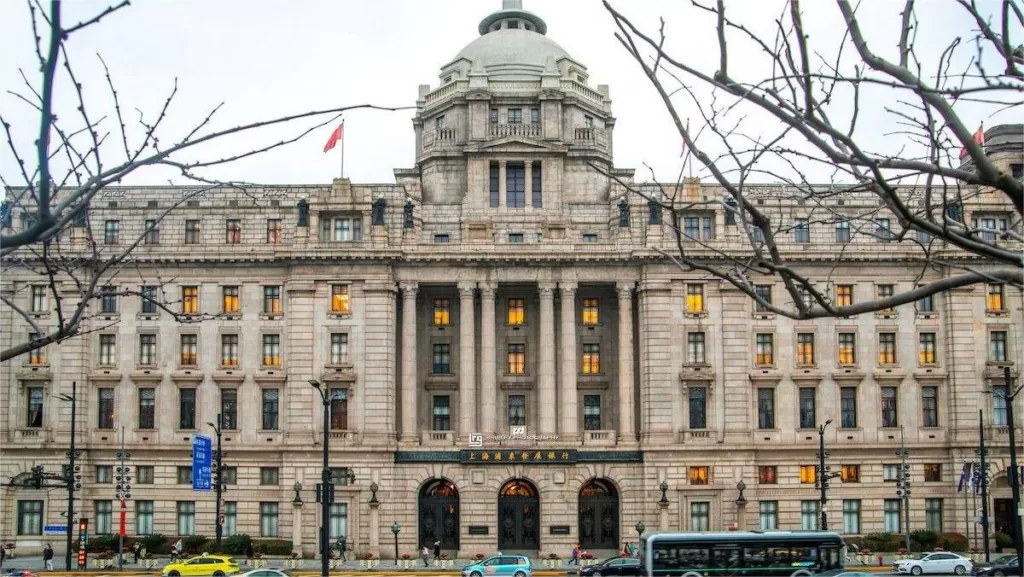De geschiedenis van de Banks on the Bund, Shanghai


The Bund in Shanghai is known for its iconic waterfront area, featuring a stunning collection of historic buildings. Among these buildings are the grand banks that played a significant role in shaping the financial landscape of China and establishing Shanghai as a major international financial center. Let’s take a journey through the history of the banks on the Bund in great detail:
Early Development: The origins of the Bund’s banking district can be traced back to the mid-19th century when Shanghai was emerging as a major trading port. The Treaty of Nanking in 1842 and subsequent treaties opened Shanghai to foreign trade, attracting a wave of foreign merchants and establishing the International Settlement. As trade expanded, the need for banking services grew, leading to the establishment of the first banks on the Bund.
HSBC Building (now known as Shanghai Pudong Development Bank): The first bank on the Bund was the Oriental Bank Corporation, founded in 1845. However, it was the arrival of the Hongkong and Shanghai Banking Corporation (HSBC) in 1865 that truly transformed the banking scene. HSBC built a grand neoclassical building on the Bund in 1923, which became an iconic symbol of the city. After the communist revolution in 1949, HSBC’s operations were nationalized, and the building was eventually occupied by the Shanghai Pudong Development Bank.
The Bund Building (now known as Bank of China): The Bund Building, constructed in 1937, was originally home to the Bank of China. Designed in an Art Deco style, it stood as a symbol of modernity and prosperity. The Bank of China played a crucial role in China’s financial development and foreign exchange operations. After the establishment of the People’s Republic of China, the bank continued to operate but with a shift in focus towards domestic affairs. Today, the building houses the Shanghai Branch of the Bank of China.
The Great Northern Telegraph Building (now known as Industrial and Commercial Bank of China): Constructed in 1907, the Great Northern Telegraph Building served as the headquarters for the Great Northern Telegraph Company. The company provided telegraph services between Shanghai and Europe. In 1923, the building was acquired by the Yokohama Specie Bank and later passed into the hands of the Industrial and Commercial Bank of China (ICBC). Today, the ICBC uses this iconic building for its operations.
The Bund 18 Building (now known as the Peninsula Shanghai): Completed in 1923, the Bund 18 building was originally the headquarters of the Chartered Bank. The Chartered Bank was one of the prominent foreign banks in Shanghai, specializing in trade financing. The building featured a neoclassical design with Greek and Roman architectural elements. After a series of ownership changes, it was renovated and transformed into a luxury hotel and shopping center, known as The Peninsula Shanghai.
Other Banks on the Bund: Apart from the prominent buildings mentioned above, several other banks operated on the Bund. These included the Russo-Chinese Bank, Yokohama Specie Bank, Shanghai Commercial and Savings Bank, and the Bank of Communications. Each bank played a crucial role in financing trade, providing credit facilities, and promoting economic growth in Shanghai.
The banks on the Bund collectively symbolize the dynamic history of Shanghai’s financial sector. While some of the buildings have transitioned into new roles, their architectural splendor and historical significance continue to captivate visitors, serving as a reminder of Shanghai’s position as a global financial hub.